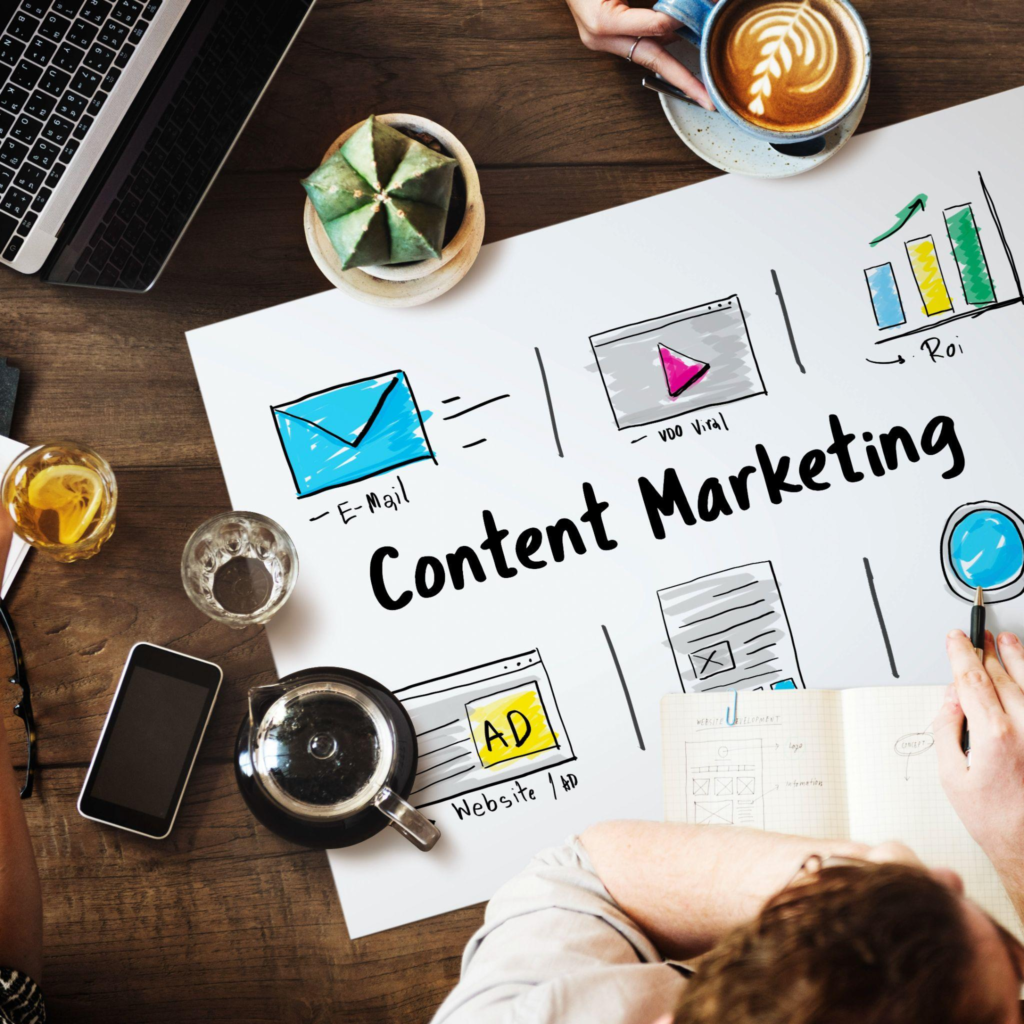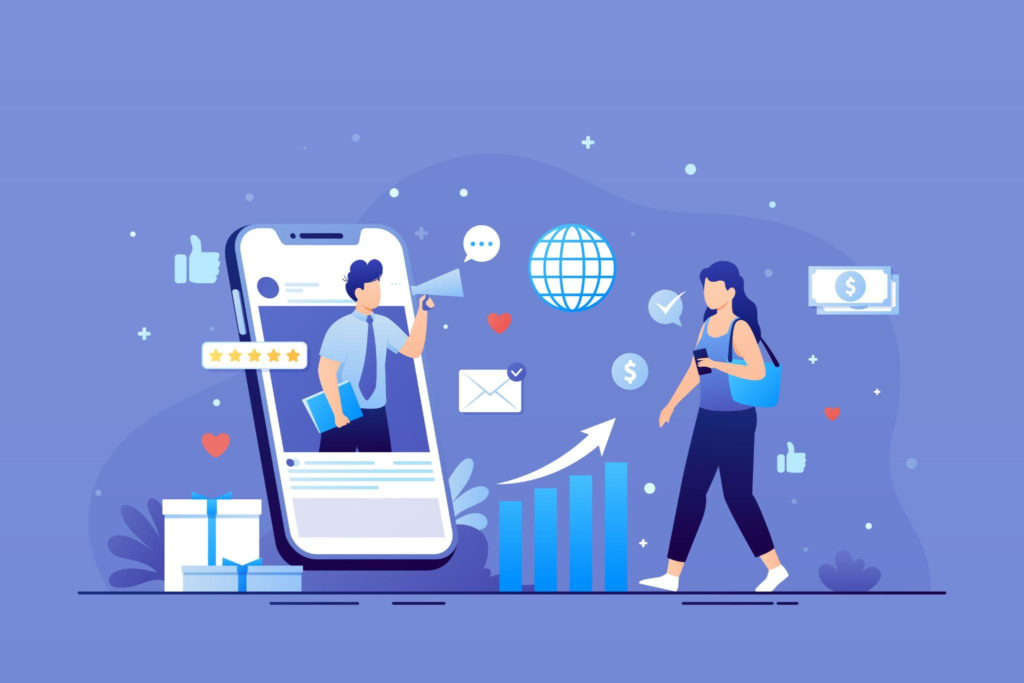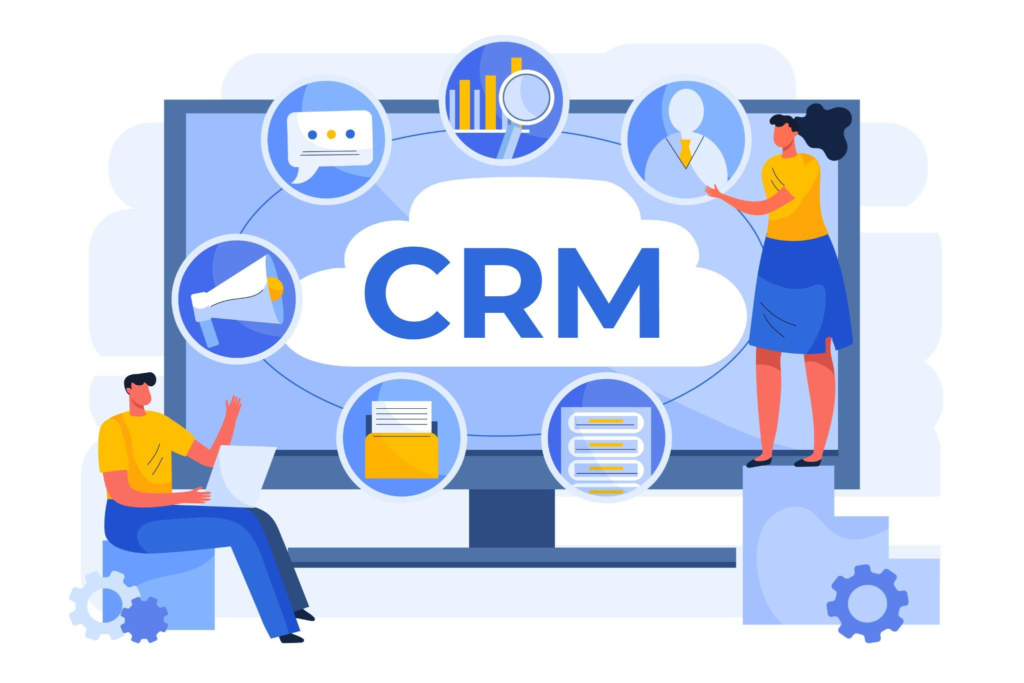In the ever-evolving landscape of business-to-business (B2B) sales and marketing, the quest for transforming leads into lucrative deals remains a perpetual challenge. As the calendar flips to 2023, businesses are navigating an increasingly competitive environment, where the traditional sales playbook no longer guarantees success. In this era of digital transformation, economic uncertainties, and shifting buyer behaviors, the strategies and tactics that once drove B2B sales have undergone a remarkable metamorphosis. To thrive in this changing landscape, B2B organizations need to adopt innovative approaches and proven methods that adapt to the current marketplace.
This blog explores ten proven and forward-thinking ways to bridge the gap between leads and deals in the B2B sector for the year 2023 and beyond. It delves into a landscape where technology, data, and human connection converge to create the perfect storm for B2B sales success. Whether you’re a seasoned sales professional, a startup founder, or a marketing guru, these strategies and insights can empower your B2B endeavors and drive results
.1. Embrace Account-Based Marketing (ABM)
Account-Based Marketing (ABM) stands at the forefront of the evolving B2B sales landscape, offering a strategic approach that has proven to be a game-changer. As businesses navigate the dynamic marketplace of 2023, the role of ABM takes on greater significance, driven by its ability to deliver precisely tailored marketing efforts to high-value target accounts. This approach offers a paradigm shift from conventional mass marketing and ushers in a new era of personalization, data-driven decision-making, and advanced technologies. In this comprehensive exploration, we delve into the world of ABM, its evolution, and the pivotal role it plays in reshaping B2B sales strategies for the year 2023 and beyond.
The Evolution of ABM: Personalization and Precision
Historically, B2B marketing often adopted a one-size-fits-all approach, casting a wide net in the hope of capturing leads and prospects. While this method did yield results, it lacked the precision necessary to effectively engage high-value target accounts. This gap led to the emergence of Account-Based Marketing, a strategy that places a laser-like focus on specific accounts with the highest potential for conversion.
ABM leverages the power of personalization, tailoring marketing efforts to address the unique pain points, objectives, and needs of these identified accounts. The concept is simple: treat each high-value account as a market of one. In doing so, businesses can create highly relevant and personalized experiences for prospects, nurturing them through the sales funnel with greater efficiency and success.
In 2023, ABM is poised to reach new heights, largely due to significant advancements in AI and machine learning. These technologies have revolutionized the way we collect, analyze, and leverage data, making ABM more data-driven and precise than ever before. The insights derived from AI and machine learning enable businesses to refine their targeting, predict buyer behavior, and optimize their marketing strategies in real-time. This integration of data-driven decision-making and personalization has positioned ABM as a strategic powerhouse in the B2B sales arsenal.
The Core Principles of Account-Based Marketing
To fully embrace ABM in 2023, it’s essential to understand the core principles that underpin this strategy:
Identify High-Value Target Accounts: The foundation of ABM is identifying the accounts that hold the most potential for conversion. These are the accounts with the highest revenue potential or strategic significance to your business.
Personalization: ABM relies on creating highly personalized and relevant content, messages, and experiences for each target account. This personal touch distinguishes ABM from generic marketing.
Multi-Channel Approach: ABM often employs a multi-channel approach, encompassing email, social media, content marketing, and more. This ensures that you reach your target accounts through various touchpoints.
Alignment of Sales and Marketing: Successful ABM requires close alignment between your sales and marketing teams. Both must work collaboratively to understand the needs of target accounts and provide a seamless customer journey.
Data-Driven Insights: Data is the lifeblood of ABM. AI and machine learning enable businesses to gather and interpret data, providing valuable insights to inform decision-making.
Continuous Measurement and Optimization: ABM is a dynamic strategy. Continuously measure the effectiveness of your efforts and adjust your approach based on real-time data.
AI and Machine Learning: The Catalysts of ABM Evolution
The advent of AI and machine learning technologies has been pivotal in elevating ABM to new heights. These technologies provide three essential functions:
Data Insights: AI can analyze vast amounts of data to uncover patterns and trends that may not be apparent through manual analysis. This insight informs your targeting and messaging.
Predictive Analytics: Machine learning algorithms can predict buyer behavior, helping you understand when and how to engage target accounts effectively.
Real-Time Optimization: AI enables real-time campaign optimization. It can automatically adjust your marketing efforts based on the performance of different channels, messages, and content, ensuring you make the most of every interaction.
With the aid of AI and machine learning, ABM becomes a more agile and responsive strategy. It evolves from a static, one-time campaign into a dynamic, data-driven process that continually adapts to the changing landscape and the unique behaviors of your target accounts.
The ABM Journey: From Identification to Conversion
Let’s take a closer look at the stages of an effective ABM campaign:
Identification: The journey begins with identifying the high-value target accounts. This process involves a careful analysis of your existing customer base, market research, and insights from your sales and marketing teams. AI-driven tools can help identify accounts with the highest propensity for conversion based on historical data and predictive analytics.
Personalization: Once you’ve identified your target accounts, the next step is to create highly personalized content and messaging. This can range from tailored emails and case studies to personalized website experiences and social media outreach. The key is to speak directly to the specific needs and challenges of each account.
Multi-Channel Engagement: ABM thrives on a multi-channel approach. Engage your target accounts through a combination of channels, ensuring they encounter your messaging at different touchpoints. Consistency is crucial, and all channels should reinforce the same personalized message.
Alignment and Collaboration: Your sales and marketing teams must collaborate closely throughout the ABM process. Marketing provides the insights and materials, while sales nurtures the relationship and closes the deal. Regular meetings and shared insights are essential to ensure seamless coordination.
Data and Analytics: Data is at the heart of ABM. Monitor the performance of your campaigns and gather real-time insights. AI can identify which channels and messages are most effective, enabling you to adjust your strategy as needed.
Conversion and Nurturing: The ultimate goal of ABM is to convert target accounts into paying customers. This involves nurturing leads, addressing objections, and providing value at every stage of the buyer’s journey. The personalization and alignment of your efforts greatly increase the likelihood of successful conversion.
The Benefits of ABM: Why It Matters in 2023
As businesses confront the unique challenges of 2023, ABM offers a host of compelling benefits:
Efficient Resource Allocation: ABM helps businesses focus their resources on high-value accounts, reducing wasted efforts on leads with low conversion potential.
Higher Conversion Rates: The personalization and precision of ABM result in higher conversion rates compared to traditional marketing approaches.
Improved Customer Retention: ABM doesn’t end with the sale; it extends to nurturing and retaining valuable customers, enhancing their lifetime value.
Enhanced Brand Loyalty: Personalized experiences and tailored solutions create a stronger bond between customers and your brand.
Competitive Advantage: In a crowded market, ABM differentiates your business by providing a unique, tailored experience for target accounts.
Data-Driven Decision-Making: AI and machine learning insights enable businesses to make informed decisions and optimize their efforts in real-time.
Scalability: ABM is scalable, making it suitable for both startups and established enterprises. It can be adapted to fit your organization’s size and goals.
Case Studies: ABM Success Stories
To illustrate the power of ABM, let’s explore a few real-world success stories from businesses that have embraced this strategy in 2023:
1. Salesforce: Salesforce, a leader in customer relationship management (CRM) software, uses ABM to target high-value accounts and provide personalized content and experiences. By aligning its sales and marketing efforts and leveraging AI insights, Salesforce has seen a significant increase in lead conversion rates and customer retention.
2. Adobe: Adobe, a multinational computer software company, employs an advanced ABM strategy that harnesses the potential of AI. Their AI-driven approach enables real-time decision-making, allowing them to adapt to changing buyer behavior and optimize campaigns on the fly.
3. Terminus: Terminus, a B2B marketing platform, specializes in ABM solutions. They exemplify the success of an organization built entirely around ABM, providing a suite of tools that assist businesses in achieving their ABM goals. Their own use of ABM practices to grow their business demonstrates the effectiveness of this strategy.
4. Snowflake: Snowflake, a cloud data platform, uses AI and machine learning to gather data-driven insights that inform their ABM campaigns. Their data-driven approach has led to increased engagement and a higher rate of conversion among their target accounts.
These case studies showcase the transformative potential of ABM when integrated with AI and machine learning technologies. They prove that ABM is not just a theoretical concept but a tangible, results-driven strategy that can be harnessed by businesses of all sizes and industries.
The Future of ABM in B2B Sales
As we look to the future, the trajectory of ABM in B2B sales appears even more promising. Here are some key insights into where ABM is headed:
Hyper-Personalization: ABM will continue to evolve toward hyper-personalization, where every interaction is tailored to the unique preferences and needs of target accounts.
AI-Driven Insights: AI and machine learning will play an even more significant role in ABM, providing businesses with deeper insights and predictive analytics to fine-tune their strategies.
Integration with Other Technologies: ABM will increasingly integrate with other technologies, such as marketing automation, customer relationship management (CRM) systems, and data analytics tools to create a comprehensive and streamlined process.
Enhanced Measurement and Attribution: Businesses will gain a better understanding of the impact of their ABM efforts, including how they influence revenue and ROI. More sophisticated attribution models will emerge.
Increased Focus on Customer Experience: ABM will not solely concentrate on the acquisition of new customers; it will extend to enhancing the overall customer experience to drive loyalty and retention.
Global Expansion: ABM will become more relevant on a global scale as businesses target high-value accounts across borders, leveraging technology to overcome geographical constraints.
2. Utilize AI and Predictive Analytics

Artificial Intelligence has emerged as a game-changer in B2B lead generation. With the capability to analyze extensive datasets swiftly and accurately, AI assists businesses in identifying potential leads more effectively than ever before. Here’s how AI is transforming the lead generation process:
Efficient Data Analysis: AI can swiftly sift through vast datasets to pinpoint potential leads. It identifies patterns, behaviors, and characteristics that might not be apparent through manual analysis, streamlining the lead identification process.
Lead Scoring: AI-driven lead scoring systems evaluate the quality and potential of leads based on various factors such as demographics, engagement, and historical data. This sophisticated scoring process enables businesses to prioritize their efforts and focus on leads with the highest likelihood of conversion.
Personalization: AI enables businesses to personalize their interactions with leads by analyzing their behaviors and preferences. By tailoring content and communication to individual leads, businesses can nurture relationships more effectively, ultimately boosting conversion rates.
Chatbots and Virtual Assistants: AI-powered chatbots and virtual assistants provide immediate responses to leads’ inquiries, ensuring that potential clients receive timely and accurate information. This not only enhances the user experience but also captures valuable lead data.
In the realm of B2B lead generation, AI-driven technologies save time and resources while increasing the accuracy and efficiency of lead identification and nurturing.
3. Content Marketing for Lead Nurturing

Content marketing continues to play a crucial role in nurturing B2B leads. In 2023, quality over quantity remains the mantra. Rather than bombarding leads with content, focus on delivering highly relevant and valuable information that addresses their pain points. Develop in-depth whitepapers, case studies, and industry-specific content to establish yourself as an industry authority.
4. Implement Marketing Automation

Marketing automation platforms are indispensable for managing leads efficiently. They can track and score leads, automate personalized email campaigns, and nurture prospects throughout the buying journey. Utilize marketing automation tools to ensure that leads are nurtured in a timely and consistent manner, increasing your chances of converting them into deals.
5. Personalization in Communication

Personalization is key to capturing the attention of B2B leads. In 2023, personalization goes beyond addressing your contacts by their first name. It involves tailoring your messaging to their specific needs, challenges, and interests. The more personalized your communication, the more likely leads are to engage and eventually convert into customers.
6. Leverage Social Selling

Social media platforms continue to be influential in B2B lead generation. LinkedIn, in particular, remains a hotspot for connecting with potential clients. In 2023, leverage social selling by sharing valuable content, engaging in relevant discussions, and connecting with key decision-makers in your target industries. Building relationships on social platforms can lead to valuable B2B deals.
7. Networking and Relationship Building

Networking remains a timeless strategy for B2B success. Attend industry events, join online forums, and actively seek opportunities to connect with potential leads. In 2023, focus on relationship building. Nurturing authentic, long-term relationships with leads can lead to sustainable B2B deals over time.
8. Customer Relationship Management (CRM) Systems

CRM systems are the backbone of B2B lead management. In 2023, modern CRM platforms are more integrated and equipped with advanced analytics. They provide a 360-degree view of your leads and clients, helping you make data-driven decisions. Choose a CRM system that aligns with your specific needs and integrates seamlessly with your other tools.
9. Qualify Leads Effectively
Not all leads are created equal. To maximize your chances of closing deals, you must effectively qualify your leads. One popular method is BANT (Budget, Authority, Need, Timeline). This criteria-based approach helps you focus your efforts on leads who are more likely to convert in a reasonable timeframe. In 2023, refined lead qualification strategies are essential to prioritize resources effectively.
10. Sales and Marketing Alignment

The alignment of sales and marketing teams is an age-old challenge. However, it’s more crucial than ever in the B2B landscape of 2023. Both teams must work closely, sharing insights and collaborating on lead nurturing efforts. Establishing a clear and mutually agreed-upon process for passing leads from marketing to sales ensures a seamless transition, increasing the likelihood of closing deals.
Conclusion
In the rapidly changing world of B2B sales in 2023, it’s imperative to adapt and employ proven strategies to turn leads into deals. From embracing Account-Based Marketing to utilizing AI and predictive analytics, the B2B sector is undergoing a transformation that requires innovation and agility. By focusing on personalization, content marketing, and effective lead qualification, you can maximize your chances of closing valuable B2B deals. Moreover, the harmonious alignment of sales and marketing teams is more important than ever to ensure a smooth transition from lead generation to deal closure.
The strategies discussed in this article provide a roadmap for B2B organizations to navigate the complexities of the market and stay ahead in the race to turn leads into successful deals in 2023.


